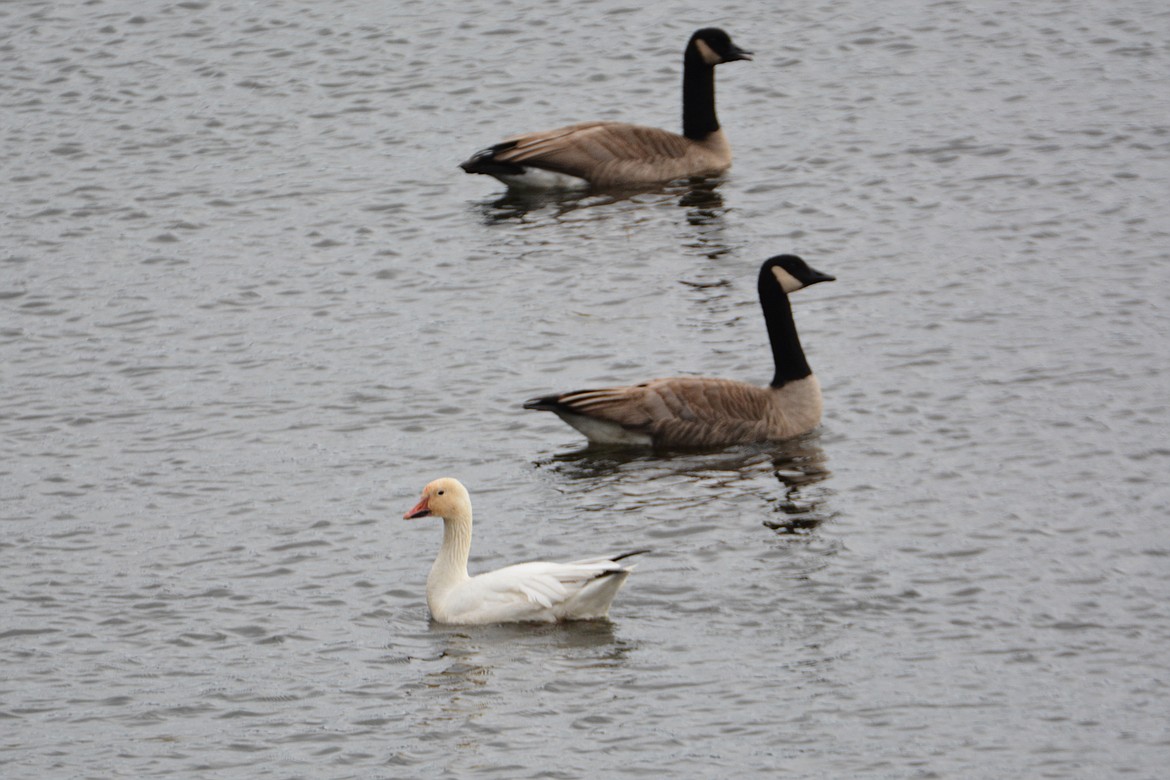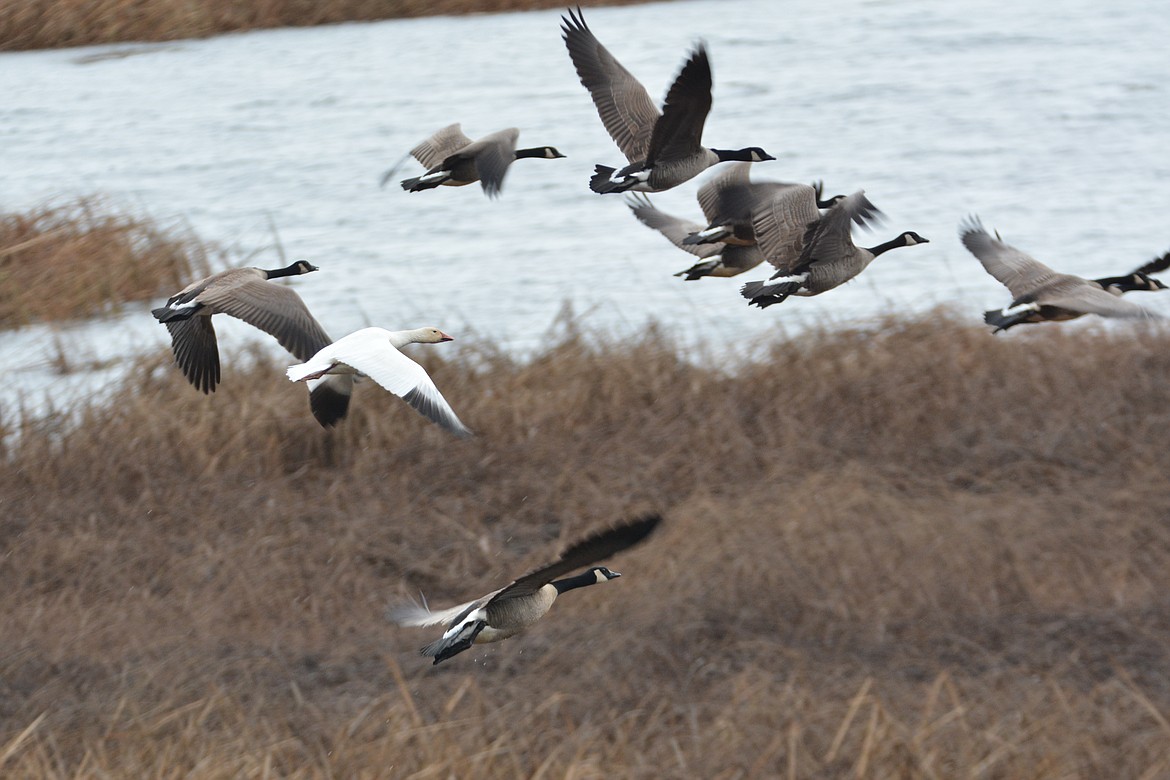Canada flock adopts a snow goose!
I came across an interesting sight last week when approaching Myrtle Pond on the Kootenai Wildlife refuge. A white goose was setting comfortably among a flock of Canada geese.
Geese are birds which prefer to be in flocks, ideally of their own kind. The white goose hanging around with the Canada goose flock had my curiosity up. I wondered what was going on here; is nature playing a trick on me? At first glance I thought it was an albino Canada goose but on closer inspection noted it was too small.
I was curious if the bird might be an escaped white domestic goose. They sometimes mix with Canada geese. The other possibility is a snow goose which has a minor injury, not enough to stop it flying, but enough to stop it from migrating with the other snow geese when they left early from the Arctic.
I have seen one or two snow geese in a flock of Canada geese during migration in previous years. I always surmised it was a safety in numbers instinct and that the birds will just join in with a flock.
The flock of Canada geese he was with was unmistakable. The big, black-necked geese with their signature white chinstrap mark are a familiar and widespread bird of North Idaho. Thousands of “honkers” migrate north and south each year, filling the sky with long v-formation.
Snow geese are harbingers of the changing seasons. They fly south for the winter in huge, honking flocks that may appear as a “V” formation or simply as a large “snowstorm” of white birds. They spend the colder seasons in southern coastal marshes, bays, wet grasslands, and fields. Their diet is entirely vegetarian, consisting of grasses and grains, grazed from damp soils or even shallow water. But this snow goose was flying solo hoping to catch up with his mates, while sharing company with his big cousins.
Snow geese make epic journeys by air, but they are impressive on foot, too. Within the first three weeks of hatching, goslings may walk up to 50 miles with their parents from the nest to a more suitable brood-rearing area. Molting snow geese can outrun many predators.
Disoriented, lost and injured birds often join other flocks. The birds just appear to want the leadership, company and safety offered by being in a flock, and any flock seems to be all right with them. This snow goose seemingly has been adopted by the flock of Canada geese. It would be interesting to know if he is with a flock of snows or Canada geese when he comes through next spring.



